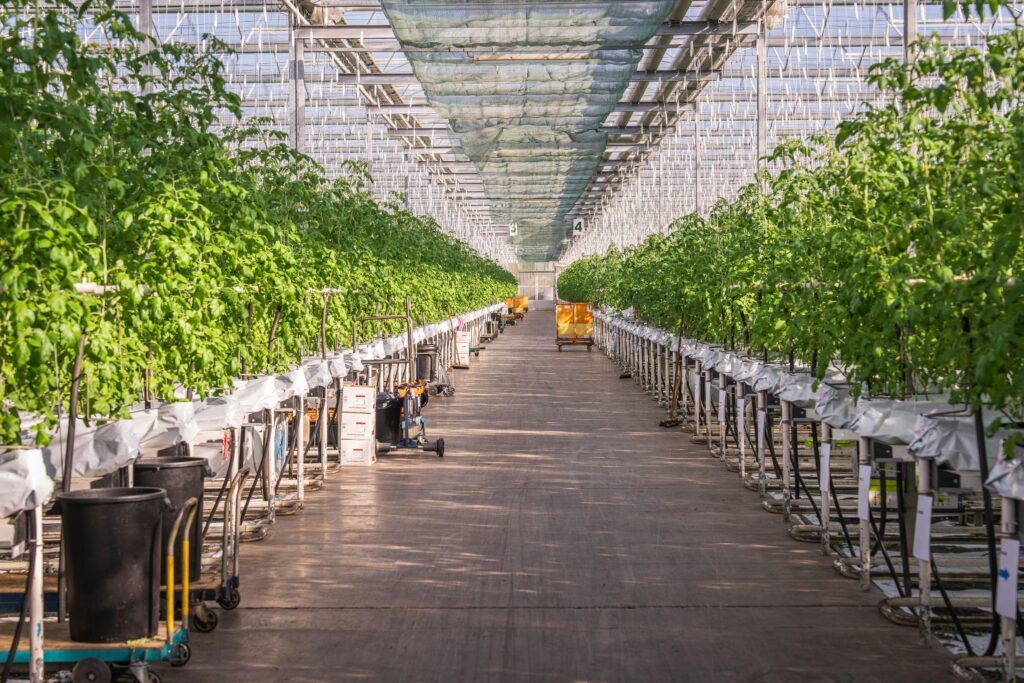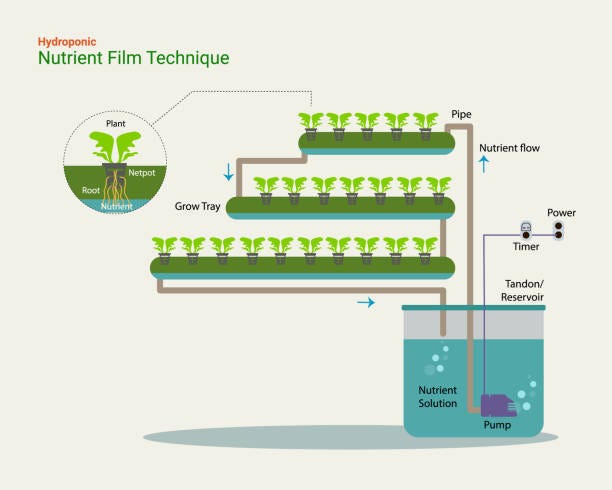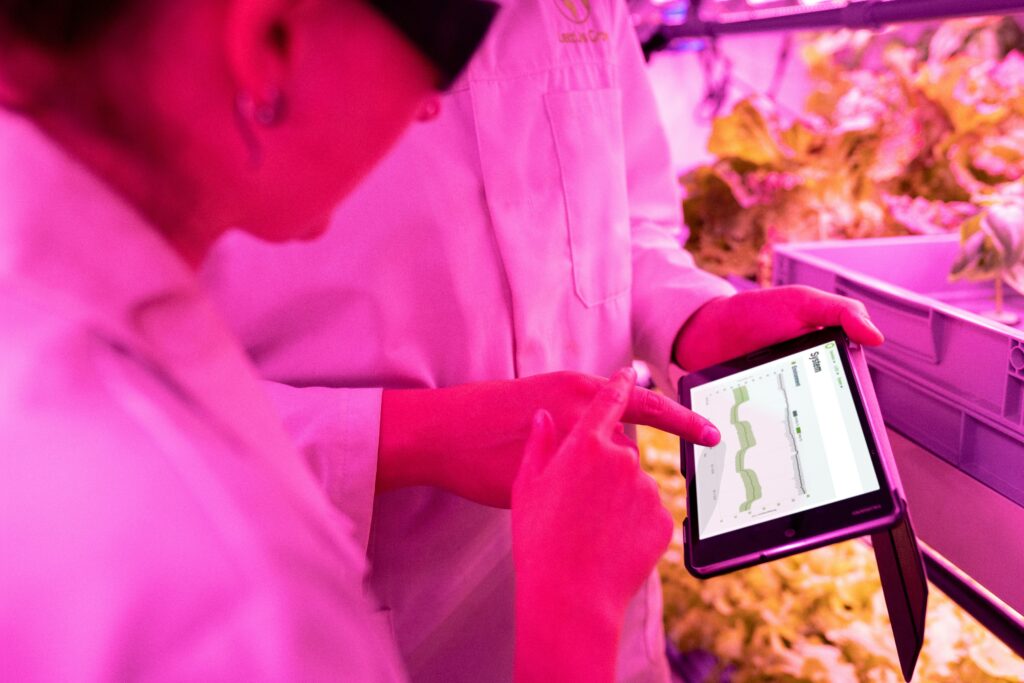Key Takeaways
- E-soil is a biodegradable, electrically conductive growing medium that boosts plant growth by delivering low-voltage stimulation to roots.
- Early trials with barley seedlings showed up to 50% more biomass in just two weeks compared to traditional hydroponic substrates.
- Because it’s renewable and efficient, it aligns with sustainable farming models like regenerative agriculture and the circular economy.
- Though still in the research stage, e-soil could play a key role in vertical farming, urban agriculture, and food production in resource-limited regions.

What Is E‑Soil?
E-soil, short for “electronic soil,” is a bioelectronic substrate developed by Linköping University researchers. It combines plant-derived cellulose with a conductive polymer Poly (3,4-ethylenedioxythiophene), long for PEDOT, forming an organic mixed ionic-electronic conductor. This design allows safe, low-power electrical currents to stimulate plant roots directly when used in hydroponic systems.
Originally experimented in a controlled lab environment to grow barley seedlings, whose growth rate was observed to increase by 50%, e-soil has emerged as a groundbreaking green technology in the agriculture sector. The substrate uniquely blends biodegradable materials with cutting-edge electronics, offering an eco-friendly, more efficient alternative to conventional substrates.
Unlike mineral wool, which dominates hydroponics, this e-substrate is biodegradable, renewable, and bio-active, making it more sustainable and future-friendly.
For a broader view on sustainable farming, check out our Guide to Regenerative Agriculture in 2025.
How Does E-Soil Work?
It functions as both mechanical support and electrical conduit for plants grown without soil:
- Researchers mix cellulose with PEDOT to create a porous, conductive scaffold.
- Barley seedlings are grown within this substrate in a hydroponic setup.
- A low-voltage current (much safer than high-voltage methods) is applied to electronic soil mix using electrodes for about five days.
The results are impressive: barley seedlings in electrically stimulated e-soil grew up to 50% more in dry biomass over 15 days, in both root and shoot mass. While non-electrified controls grew similarly to those in mineral wool, only the electrically charged e-soil delivered dramatic growth benefits.

- Conductive e-soil substrate with electrodes beneath root zone
- Low-voltage power source connected safely to substrate
- Plant roots suspended in the conductive medium
- Comparison arrows showing increased root & shoot growth vs. non-electrified control
Lab observations suggest that e-soil enhances nitrogen uptake, optimizing metabolic processes that drive both root and shoot growth. Though the exact biological pathways are still under investigation.
Benefits Of E-Soil In Hydroponics
1. Enhanced Plant Growth
Experiments with barley seedlings showed that this advanced technology can increase crop biomass by up to 50% in just two weeks. Assumption is that improving nutrient absorption at the root level via electronic stimulation makes plants grow faster and stronger than those in traditional substrates.
2. A Sustainable Alternative
Unlike mineral wool or synthetic mediums, the soil substitute is made from cellulose and conductive polymers, both biodegradable and renewable. This makes it an eco-friendly choice for farms looking to reduce waste and reliance on non-recyclable materials.
3. Low-Energy, High Efficiency
It requires only a small, safe voltage to work, consuming minimal energy while avoiding the risks of high-voltage electroculture. For growers, this means improved yields without costly power inputs.
4. Smarter Resource Management
When combined with hydroponics, the substrate ensures that plants make the most of available water and nutrients, lowering the need for excess fertilizer and reducing environmental runoff.
5. Adaptable To Modern Farming Systems
From vertical farms in cities to greenhouses in arid climates, e-soil integrates seamlessly with controlled environments, opening opportunities for sustainable food production where traditional soil farming is impossible.

Current Limitations And Ongoing Research
1. Limited Crop Scope
To date, experiments focus on barley seedlings. Whether e-soil performs similarly with vegetables, cereals, or fruiting crops remains untested.
2. Unclear Mechanism
While nitrate processing appears improved, research doesn’t yet fully comprehend how electrical stimulation triggers these effects.
3. Scale-Up Challenges
From lab experiments to commercial farms, questions about cost, substrate preparation, and practical integration remain. Long-term effects, energy efficiency at scale, and economic feasibility are yet to be determined.
Diverse and large-scale implementation of this modern electronic-soil techonology still has a long way to go.
E‑Soil Versus Traditional Electroculture
Electroculture involves applying electricity to soil or using antennas to create electric fields. These methods are often rooted in anecdotes and unverified claims. Traditional electroculture can involve high voltages and inconsistent results.
In contrast, e-soil offers a controlled and measurable approach:
- Clean, low-voltage system with reproducible results
- Designed from the ground up for hydroponics
- Backed by peer-reviewed evidence in PNAS
Integration With Regenerative And Circular Farming
This innovation represents a shift toward farming systems that value efficiency. It fits into a much bigger story about how we grow food in a changing world. Farmers and researchers are already rethinking agriculture with ideas like regeneration and the circular economy, and e-soil slots right into that vision.
For example:
- Regenerative farming is all about restoring what’s been lost, rebuilding soil, and giving back more than we take. Contrary to hydroponics, which can’t rebuild soil, this biodegradable electronic substrate can offer a renewable, low-waste growing medium that keeps plants thriving without piling up synthetic waste like mineral wool.
- Then there’s the circular economy. Instead of throwing things away, we loop resources back in. E-soil helps here too. It’s biodegradability allows it to be part of the cycle, not the landfill. And because plants pull up nutrients more efficiently, farms can cut down on fertilizers which is a win for budgets and the ecosystems.
E-soil pushes hydroponics beyond “efficient farming” toward something closer to sustainable food systems. The science is still young, but the direction is clear: less waste, more growth, and smarter resource use.

Future Outlook And Applications Of E-Soil
1. Urban Vertical Farms
This innovation could help boost yields in space-efficient indoor farms, aiding urban food production.
2. Arid Regions And Non-Arable Zones
Hydroponics with e-soil supports agriculture in deserts or densified cities lacking fertile land.
3. Commercial Scaling
Collaboration with industry and technology providers is critical to test cost, labor, substrate lifecycle, and market accessibility.
4. Research Networks
Linköping University leads the charge, supported by Horizon 2020, Wallenberg Foundation, and Swedish strategic research grants. Pilot trials with vegetables and staple grains may follow.

Conclusion
Innovation of electronic soil substitute marks an exciting advancement in hydroponic agriculture. By combining biodegradable materials, bioelectronic conduction, and low-voltage stimulation, it delivers a 50% boost in barley growth, all within just two weeks, while maintaining resource efficiency and safety.
Though still emerging, this technology fits neatly into the future of sustainable farming: from regenerative practices to circular systems, and from vertical farms to resource-constrained regions. As scientists uncover the underlying biological mechanisms and conduct field trials, this innovation could accelerate the shift toward smarter, greener agriculture.
Voice-Search Friendly FAQs
1. What is e-soil, and how is it different from regular hydroponic substrates?
E-soil is a biodegradable, electrically conductive substrate that supports hydroponic plant growth by delivering low-voltage stimulation, unlike inert substrates like mineral wool.
2. Can e-soil work with vegetables like lettuce or tomatoes?
Research to date focuses on barley seedlings; trials with other crops are planned but not yet completed.
3. Is e-soil energy efficient and safe to use?
Yes. It operates on low-voltage electricity, avoiding high-voltage risks and keeping energy use minimal.
4. Where can I test or buy e-soil?
Currently, it’s a lab prototype. Commercial availability depends on successful scaling and industry partnerships.
5. Does e-soil eliminate the need for fertilizers?
No, but it enhances nutrient uptake (like nitrogen), potentially reducing fertilizer needs within hydroponic systems.





